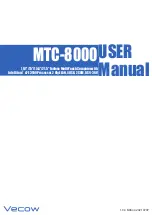
Lucent Technologies Lineage
®
2000 25A Ferroresonant Rectifier J85502A-1
Issue 4 May 1998
Spare Parts and Replacement Procedures 8 - 3
•
Observe warning labels on bags and cartons. Whenever
possible, do not remove circuit packs from antistatic bags or
cartons until ready to insert into the rectifier. Otherwise,
open all circuit packs at a static-safe work position with
wrist straps and dissipative table mats.
•
Upon removal from the rectifier, immediately put circuit
packs into antistatic packages. Always store and transport
circuit packs in antistatic packaging. Shielding is not
required unless specified.
•
Keep all static-generating materials away from circuit
packs. These materials include common plastics such as
food wrappers, clear plastic bags, styrofoam containers,
packing material, drinking cups, notebooks, and
nonconductive plastic solder suckers. The insulation on
small hand tools does not represent a static hazard.
•
Keep adhesive tape (Scotch, masking, etc.) away from
static-sensitive devices.
•
When soldering static-sensitive semiconductor devices, the
soldering iron must be grounded to the work table which
must also be earth grounded.
•
Do not wax the equipment aisles in central offices.
•
Whenever possible, maintain relative humidity above the
20-percent level.
Modifying the
CM1 Option
Board
As described in schematic drawings SD-82604-01, replacement
CM1 option boards are supplied with all wire straps and
resistors in place. The same wire straps and resistors that were
removed from the original board must be removed from
replacement boards in order for the rectifier to operate properly.
Table 8-B and Figure 6-2 show the straps and resistors to keep
and to remove from the CM1 board for each option on the
J85502A-1 rectifier. The plug-in type wire straps are removed
completely from a 2-hole jack. The other wire straps shown are
soldered in and are never replaced once they are removed.
















































